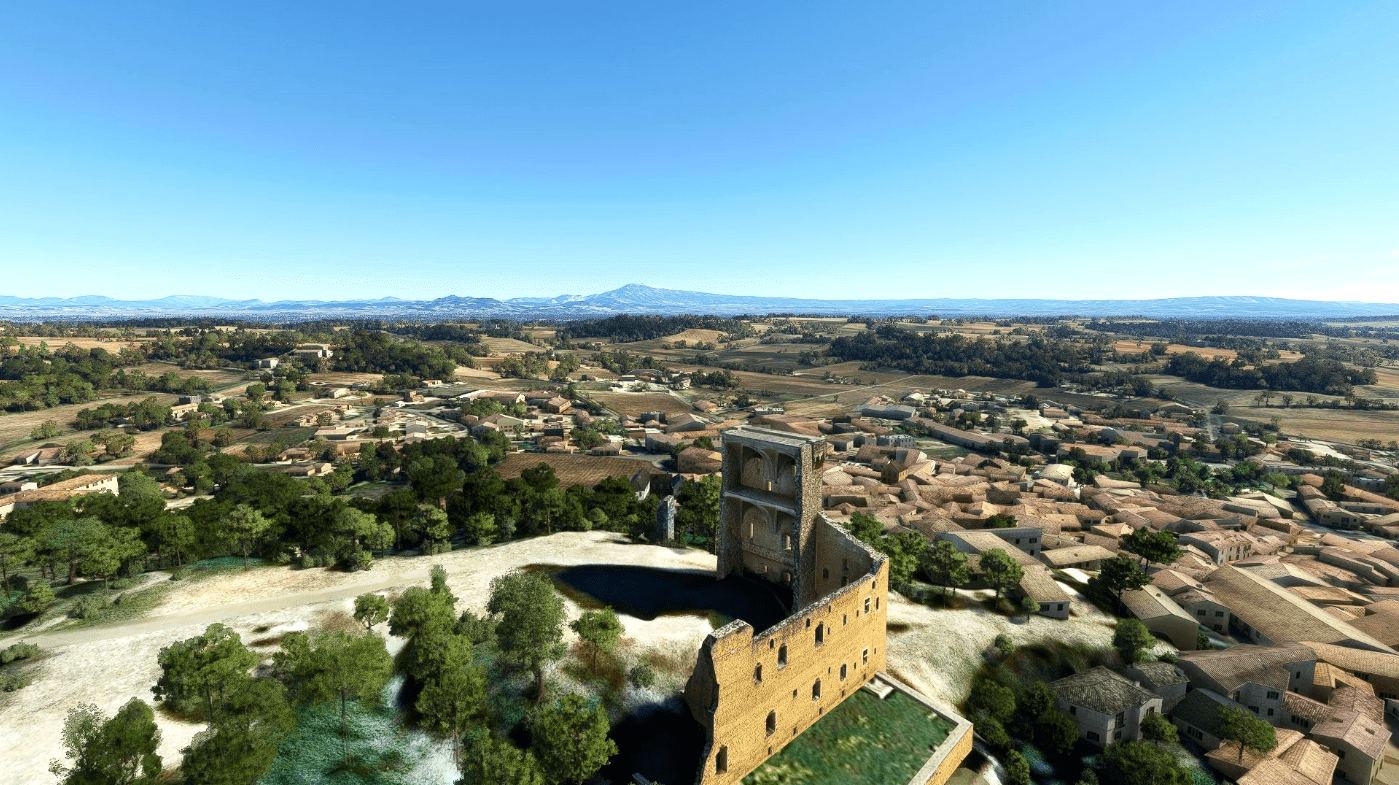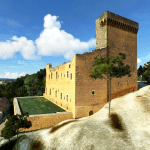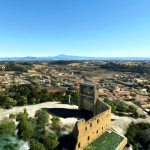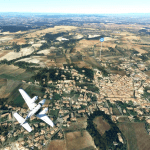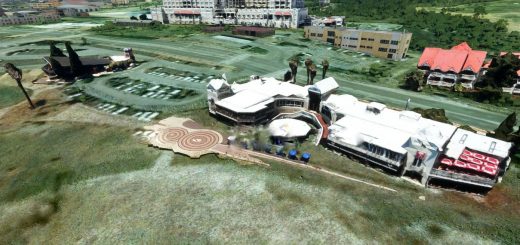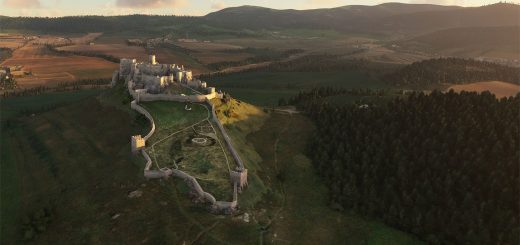Château de Châteauneuf-du-Pape v0.1
The castle of Châteauneuf-du-Pape is located in the town of the same name in southeastern France. Its presence has dominated the landscape around the village and its renowned vineyards for more than 800 years.
The Castle of Châteauneuf was probably originally a Roman castrum destroyed during the great invasions. A 913 charter referred to the castellum de Leri. It became the Château de l’Hers after it was enlarged in the 12th century, and it was renovated for the first time in the 13th.
Jacques d’Euze, previously the bishop of Avignon, was elected pope in 1316 and took the name John XXII. Châteauneuf fell directly under his authority. He had been Pope barely three months when he commissioned construction work at l’Hers. The accounts of the Apostolic Camera indicate that he allocated 3000 florins to the restoration of the 12-century castle. Then in 1317 he decided to build a new castle above the village. It was finished in 1333. Due to its size and location its function was essentially defensive. At the same time, in 1318, he circled it with ramparts.
The successors of Jean XXII rarely stayed at Châteauneuf, except when the plague threatened Avignon and the papal court installed itself there. This was the case in 1383. Only Clement VII, the antipope from 1385 to 1387, had any maintenance done on the disused château. He also had the vines replanted. He was the pope who lived there the most. His successor, the Antipope Benedict XIII, moved in during 1396 after having some restoration done.
After the Great Western schism ended and the popes left Avignon, the will and the resources to maintain the château were lacking. The bishops and archbishops of Avignon, to whom it belonged, took little interest in it and it was left to fall into disrepair.
It took on strategic importance again during the Wars of Religion. The Huguenots led by Charles Dupuy de Montbrun, lieutenant of the Baron des Adrets, took the village and the castle, which had been abandoned after the Mornas massacre, in July 1562. They stayed until February 1563 and pillaged the entire region. The building was abandoned by the Calvinists after the battle of Valréas. The Baron of Adrets retook the stronghold and burned down part of the château in March 1563. His troops pillaged the salt warehouse and burned down the church. They left only the keep and a swath of wall.
When peace returned in 1578, what remained of the castle was restored.
In 1798 the château and its domain were auctioned off to J.B. Establet who acted with the underwriting of 30 of his fellow citizens. A year later the new owner re-sold it in equal to his backers, all of whom began to take down the walls of the château, either to sell the stones or to use them themselves. In 1892, the ruin was deeded back to the state and immediately classified as a historic monument.
During World War II the Germans moved in. The keep was transformed; it served as an arms dépôt and a 115m anti-aircraft observation post. Operation Dragoon triggered a retreat of the occupation forces. The garrison of the château, which had been storing explosives and munitions, blew them up before leaving on 20 August 1944, destroying the entire northern part of the castle.
In 1960 the municipality decided to install a reception hall in the pontifical cellar. This great room of the castle has kept its original proportions. Twice a year, it serves as a prestige venue to the Échansonnerie des Papes, a confrérie bachique in Châteauneuf-du-Pape where it initiates new members. At these soirées, the inductees symbolically receive a key to the pope’s cellar.
GPS Coordinates: 44.05783474313354, 4.829062771576197

